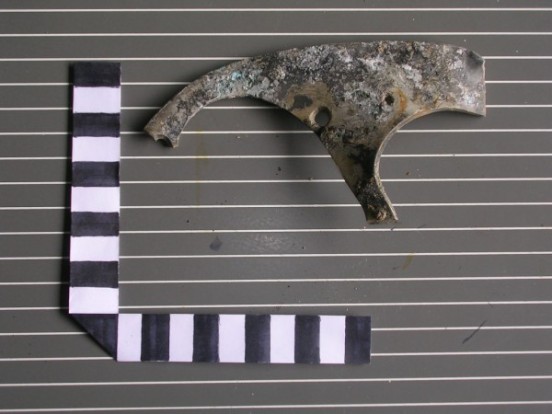de Havilland Vampire F.B. Mk.5 VV602 of No.613 (City of Manchester) Squadron, Royal Auxiliary Air Force
This page follows on from that describing the loss of the aircraft.
Following a visit to the site in September 2007 a licence was applied for to permit the excavation of the crash site, this was granted within a month. Due to the winter, wet spring and other commitments it was not until early summer that we got around to organising the dig.
After a final visit to the site to survey it with deep seeking metal detectors an excavator was hired in for a day and the group gathered on the 28th June 2008 along with a Volvo mini digger to excavate to the site.

The plan for the dig was to concentrate on a large signal that had been discovered within the crater, after the top soil had been removed the usual decayed aluminium “daz” was found. Within a couple of feet the first sizable item was discovered. This was made from stainless steel and although we were able to move it was connected to something else which prevented it from being removed from the hole. More soil was then cleared with the machine which again struck something substantial about 3 feet uphill from the first piece. At this point the shovels moved in and began clearing this item to find its edges, and then we used the digger, this time with a narrow bucket, to clear soil out from around it. The piece proved to be a large, and squashed, section of stainless steel and was obviously from the Goblin engine and it was also connected to the other item. Attempts were made to shift it by hand but it was too heavy so the machine was brought in again with a lifting strop to haul it out.
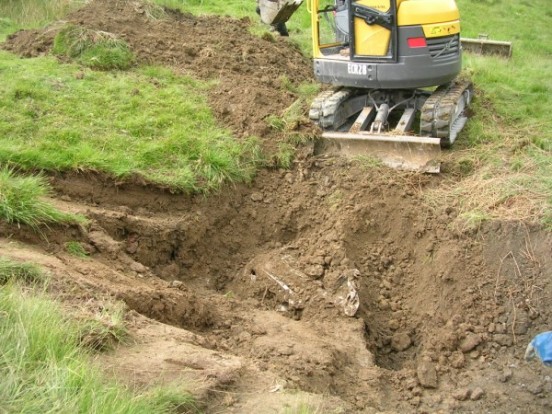
Once we had got it turned over we were able to see for the first time the rear most part of the engine, this item had been thrown back into the hole at the end of the RAF’s clear up operation as it, and pieces found in 1988, were up side down in the hole. The cone which sits within the jet pipe was straight and only showed slight pitting around its tip.
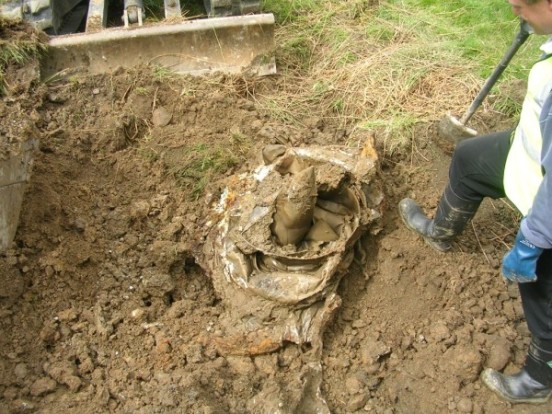
Once we had the large piece of engine out we continued to clear the crater with the digger, pausing every so often to lift out pieces which were spotted. We stopped at about six feet when clean shale was encountered, this had been our estimate of the maximum depth the original crater would have gone to. The digging then continued solely by hand to uncover as many small items as possible. A number of vanes from inside the engine were found, as were fragments of the instrument panel, but no instruments. It was reported that none had been found at the time of the crash either, the assumption that was made was that they had been destroyed in the crash, and this would seem to be true. Other items that were found included a mass balance from the elevator and shattered pieces of armour plating. A large signal that we found on the edge of the crater turned out to be a large and very heavy lump of lead, that would once upon a time have been a ballast weight.

Just to one side of the crater we found a large magnetometer contact during out previous visit to the site, after having concluded that no more big items were going to come from the hole a couple of the group set about finding this once more. It did not take long as the digger having rolled across the area had flattened to the soil just enough for the top of the item to be showing above the surface. This was then dug out by hand, at first it was thought it looked like a 20mm cannon, but then it was so twisted we thought it couldn’t be one and was possibly an undercarriage leg. Once more of it was clear it was obvious to those of us who had been on digs before that the first guess was correct. A strop was put round it and it was then lifted clear of the ground by the digger. We were amazed by the level of damage that it had suffered, on occasions the barrel may be bent but this cannon had been literally bent in half and the breach was completely smashed with almost all of the internal workings missing.
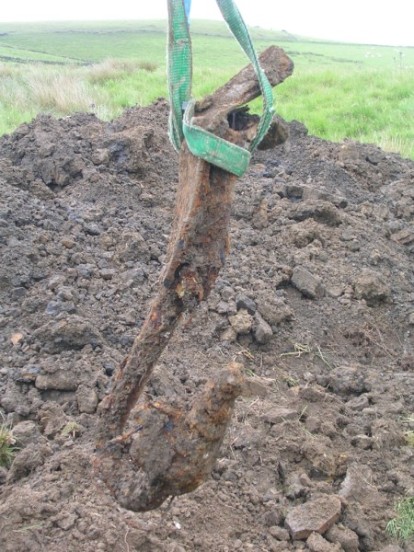
The excavation was brought to a close once all of the more substantial magnetometer and deep seeker contacts had been explained and the site was covered over again. The recovered parts have been removed for cleaning and sorting.

Below are photographs of the recovered items once they had been cleaned.

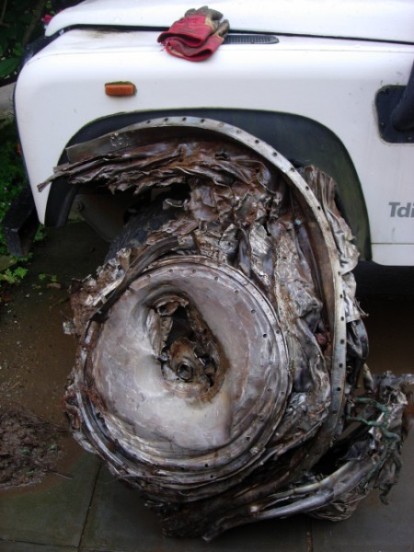

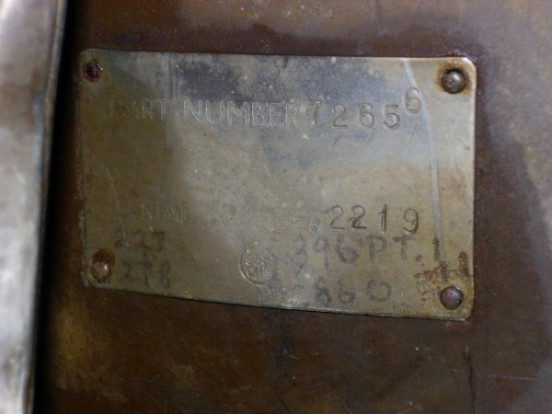

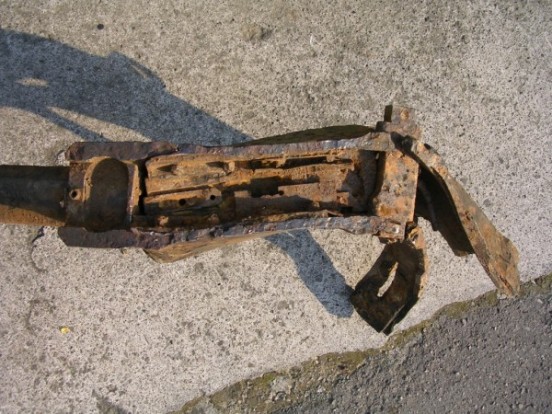



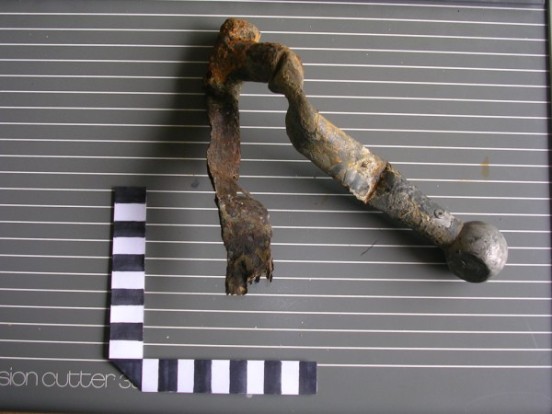
Above is a photograph of a lever that we found.
